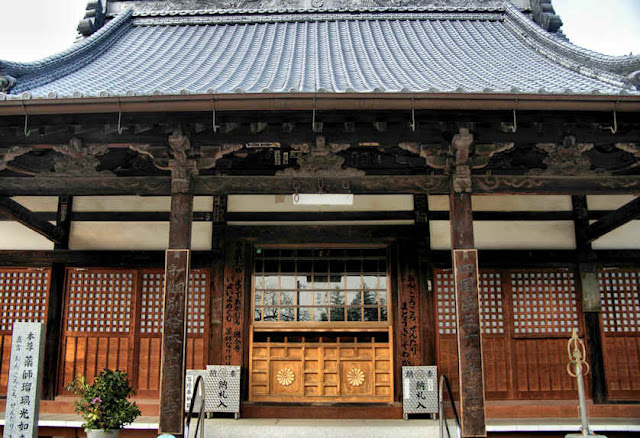Akashi castle is an Edo Period castle built to protect the approaches to Osaka from the west.
Most of the Tozama Lords, the daimyo that had fought against the Tokugawa and were therefore still considered a possible threat, lived in the west, and so the Tokugawa placed allies in strategic positions around the country.
At the entrance to what is now a huge park in front of the castle is a statue of Ikujiro Nakabe, a local politician from the Meiji era who had nothing to do with the castle. The statue was erected in 1928 but was subsequently melted down for weapons during WWII and then remade later. As well as being involved in national politics he also founded fishing companies and whaling companies that operated in the Antarctic.
The castle was constructed between 1615 and 1617 and took about a year to build. Thanks to the One Domain One Castle decree of 1615 many castles were dismantled and come of the materials and structures were recycled in the construction of Akashi Castle
It was quite a large castle with a total of twenty yagura, towers, and 27 gates.
Within the park are several gardens that are now named the Musashi Gardens after the famed samurai swordsman Miyamoto Musashi. He was involved in the design of the castle and the surrounding area, and several gardens in nearby temples are attributed to him, but these gardens in the park were named after him after a very successful TV drama series on Musashi.
A base for a Tenshu, keep, was constructed but no keep was built.
The main structures were 4 3-storey towers on each corner of the inner bailey.
The castle was built by Ogasawara Tadazane, but the Ogasawara were transferred to the Kokura Domain in 1632.
A succession of Fudai Daimyo, vassals of the Tokugawara before Sekigahara, or relatives of the Tokugawa, were given the Akashi Domain after the Ogasawara.
The castle was mostly demolished in 1874, but the two corner turrets on the south remained and are now Important Cultural Properties.
A large park and sports facilities now occupy most of the site. The stadium is built over what was probably a garden by Miyamoto Musashi.
Many events and festivals take place in the park.
It is a popular spot both for Cherry Blossom and Autumn Leaves viewing.
It is free to enter and a ten alk from JR Akashi Station.
















































































